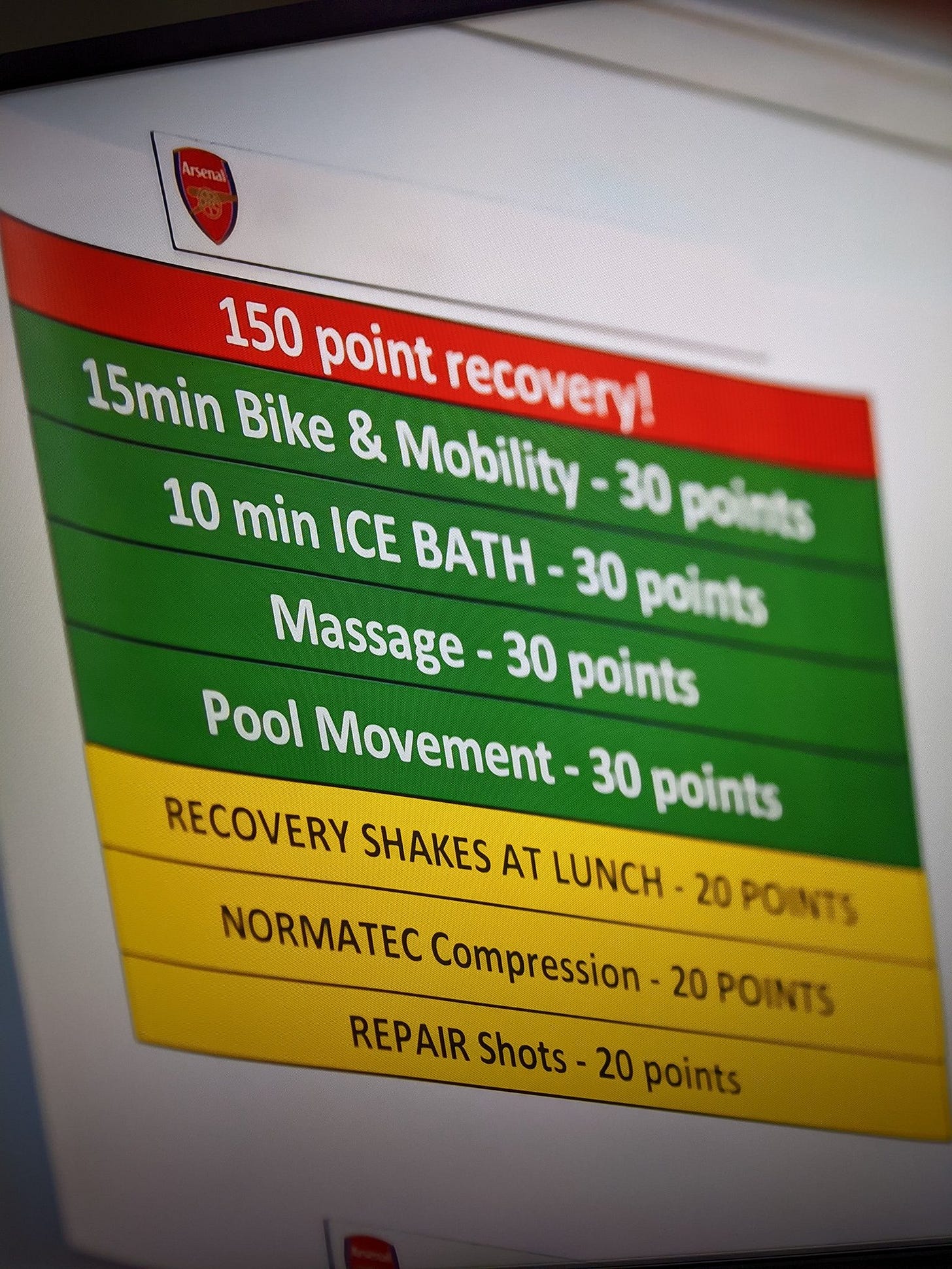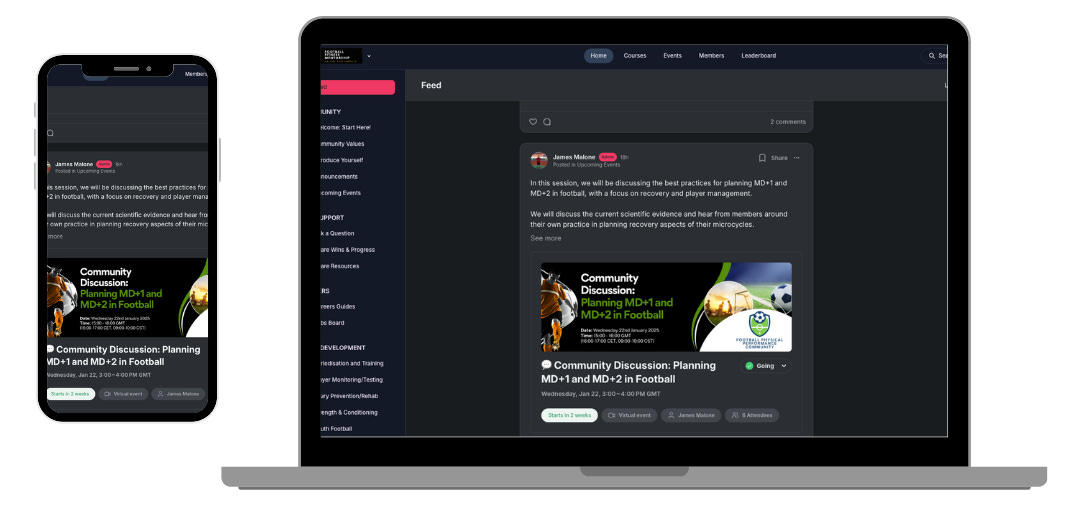How to Manage Fixture Congestion in Football
Fixture congestion can be both a gift and a curse.
On one hand, fixture congestion can get players into a ‘groove’ of playing and increase match fitness.
Conversely, teams with small squads and limited rotation may find themselves with an increased injury list and reduced performance through congestion.
The more successful a team becomes, the likelihood of fixture congestion increases.
During Manchester City’s treble winning season in 2022/23, the club played 61 competitive games.
With competition demands increasing, such as the Champions League’s extended format, successful teams will face ever greater fixture congestion.
In nations without traditional breaks in the season (e.g. Christmas break), this further adds to the complexity of the situation.
So, with fixture congestion on the rise, how can football fitness practitioners manage players effectively?
Let’s dive in.
Rotate the Players
There is always a temptation to play your best 11 week in, week out.
Coaches talk about ‘match rhythm’ when it comes to players, which can be important.
However, if we keep running players into the ground then eventually they will either break or performance levels will drop.
Whilst signing players to develop a strong squad is outside the control of fitness coaches, managing workload through player monitoring is certainly something we can do.
We tend to focus on GPS data to look at the external load of players.
However, its important not to neglect their internal response and readiness testing data to better inform recommendations.
Suggestions to the coaching staff around rotation will be crucial to manage players through these challenging periods.
It can come down to a number of factors, such as importance of the upcoming fixture, opposition difficulty and current status of the player.
The more you can forward plan, the better. However, football tends to throw a spanner in the works, so you have to be flexible with you plan.
Optimise Recovery
Once you enter a period of fixture congestion, the importance of getting the right recovery protocols in place becomes even greater.
Most practitioners have a good idea around which recovery interventions work well with their players.
Ice baths, compression, massage – these are methods that most clubs are using.
However, it’s the players adherence to recovery that is the key factor.
For example, you might employ ice baths for recovery, but if a player is only half-sitting in the bath for 2 minutes instead of fully immersed for the set 10-minute protocol, then they won’t get the recovery benefits.
The same with recovery aspects outside of the training ground. It’s no good adhering to best practice recovery habits in the club setting, but then as soon as they get home they are eating poorly and staying up late at night.
This is were player education becomes a big factor.
The use of a recovery points system, such as the one below, can help players keep track of their recovery progress and make themselves more accountable.
Ensure Non-Starters Are Ready
During fixture congestion, rotation of players will naturally occur due to the increased demands.
It’s crucial that players outside of the strongest 11 are ready to hit the ground running.
Whilst training for non-starters is limited during fixture congestion, its important that during one game weeks the players are exposed to physical load to ‘bridge the gap’ with starters.
A study from Liam Anderson in 2016 on English Premier League players found that across a full season, the difference in sprint distance between starters and non-starters was 11.2km vs 2.9km on average.
Whilst there will always be some form of gap between these two groups of players, the closer we can close the gap in terms of load and physiological adaptation the better.
The typical opportunities to load these players are on a MD+1 whilst the starting players are on a recovery day.
Another opportunity may be post-match with some running drills on the pitch, but its worth noting that some leagues limit the time players can be out on the pitch which may make this impossible.
Take Home Messages
Manging fixture congestion can be a tricky one to navigate for fitness coaches.
Below are some key take home points around how to manage fixture congestion across the season in football:
- Ensure that players are rotated, ideally with a plan set up in advance. It’s important to have a good relationship with the coaching staff to gain their buy in with your recommendations.
- Emphasise the importance of recovery during congested fixture periods. Recovery scorecards or points systems can work well in this scenario.
- Focus on improving the fitness levels of non-starting players, so they are ready to step in when rotation takes place during fixture congestion.
If you would like to find out more about how to train and periodise football players as a fitness coach, check out my football fitness mentorship community here.
That’s all for this week. See you next time!
🚀 Join The Football Performance Network
Take your career in football to the next level by joining a global community of 60+ physical performance practitioners.
As a member, you'll get:
✅ Direct 1:1 mentorship
✅ Weekly live events with industry-leading experts
✅ Practical, high-quality educational content
✅ A supportive network that understands your journey
Whether you're looking to grow your skills, make better decisions in your role, or build your career in elite football, this is the place to do it.
🔗 Join now and start learning, connecting, and progressing — together.




